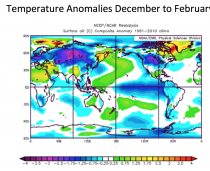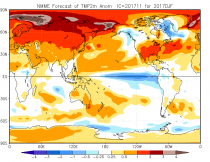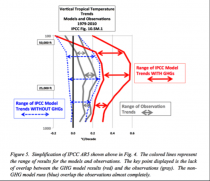by JAMES DELINGPOLE 22 Dec 20178,211
Environmental Protection Agency officials are “leaving in droves”, reports the New York Times.
More than 700 people have left the Environmental Protection Agency since President Trump took office, a wave of departures that puts the administration nearly a quarter of the way toward its goal of shrinking the agency to levels last seen during the Reagan administration.
What marvelous news to ease us all into the festive Christmas spirit, eh readers?
Why, it’s like the final scene in A Christmas Carol where Scrooge repents of all his miserliness, his nephew Fred gets a big fat turkey, Bob Cratchit gets a pay rise and Tiny Tim declares “God bless us, every one!”
Not, of course, that this is quite the way the New York Times sees it. It wants us to believe that this is an attack on both science and the environment.
Within the agency, science in particular is taking a hard hit. More than 27 percent of those who left this year were scientists, including 34 biologists and microbiologists; 19 chemists; 81 environmental engineers and environmental scientists; and more than a dozen toxicologists, life scientists and geologists. Employees say the exodus has left the agency depleted of decades of knowledge about protecting the nation’s air and water. Many also said they saw the departures as part of a more worrisome trend of muting government scientists, cutting research budgets and making it more difficult for academic scientists to serve on advisory boards.
Actually, though, what it really is is #winning.
EPA administrator Scott Pruitt is achieving what President Trump appointed him to do. He is draining the swamp.
As I’ve argued before, the EPA has always had less to do with protecting the environment - Colorado gold mine, anyone? - than it does with killing business.
Essentially, it is a communist sleeper cell introduced to the heart of the U.S. government system by Richard Nixon in the mistaken belief that paying Danegeld to your enemies will make them leave you alone.
Previous Republican presidents - such as the Bushes - were far too squishy to dare reform it.
Democrat presidents, most notably Obama, used it as a way of bypassing Congress and imposing on the U.S. a United-Nations-driven globalist agenda almost entirely inimical to the interests of American citizens.
The most egregious example of this was the EPA’s Endangerment Finding, which declared carbon dioxide - and various other harmless trace gases - to be a threat to “the public health and welfare of current and future generations.”
This was a political decision, not a scientific one, forced through by Obama’s hatchetwoman Lisa Jackson.
As Dennis Ambler argued at the time in this Science and Public Policy paper:
The EPA is effectively no longer under the control of the US Congress; its allegiance is to the UN and implementation of the policies of Sustainable Development via Agenda 21. It has considerable involvement in the IPCC reports and claims the UN body as a peer reviewed authority, in pursuing ever more rigorous controls of “CO2 pollution”, to bring about the realisation of “environmental governance”.
Whilst Lisa Jackson is currently the face on the box at the EPA, she is simply carrying out the tasks expected of her by the globalist movement in setting the scene for more international control, under the leadership of the United Nations.
Most of the EPA authors of the Endangerment Technical Support Document were economists and environmental policy specialists with qualifications like Masters in International Affairs or Public Policy or Management. Those few that were scientists were bought and paid up members of the UN/IPCC establishment, with no interest in questioning the alarmist consensus.
The junk science of the Endangerment Finding was in turn responsible for Obama’s monumentally destructive Clean Power Plan, which drove up energy prices, hit U.S. economic competitiveness and killed jobs.
Anyone who thinks it’s sad that 700 EPA officials have lost their jobs should maybe consider the 50,000 workers in the U.S. coal industry alone who lost their jobs as a result the EPA-enforced Clean Power Plan.
Of all the many disastrous decisions made by the Obama administration, probably the most dishonest and damaging was the one whereby it branded the harmless trace gas which helps plants to grow as public enemy number one.
The EPA was an unaccountable agency promulgating a massive lie to the detriment of the American people, their freedoms and their livelihoods.
Donald Trump has given America a good many reasons to celebrate this Christmas. His defanging of the EPA might well be the greatest one of them all.
By P Gosselin on 13. December 2017
The Sun in November 2017
By Frank Bosse and Prof. Fritz Vahrenholt
(Translated and edited by P Gosselin)
In November the sun was unusually quiet with respect to activity. The observed sunspot number (SSN) was merely 5.7, which is only 14% of what is typically normal for month number 108 into the cycle. The current cycle number 24 began in December 2008. The sun was completely spotless 19 of 30 days in November.
At the end of the month some activity appeared, but only at a very low level. The following chart depicts the current cycle’s activity:
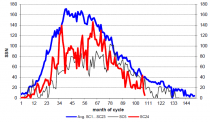
Figure 1: The monthly SSN values for the current solar cycle 24 (red) 108 months into the cycle, the curve for the mean of the previous 23 cycles (blue), and the similar solar cycle number 5 (black). Enlarged
The next chart shows a comparison of all observed solar cycles thus far:
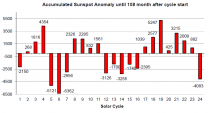
Figure 2: The monthly accumulated anomalies of the cycles up to 108 months into the cycle. Cycle number 24 has taken third place for the most inactive. Enlarged
Icecap Note: The ability with today’s advanced technology to see the smallest spots or pores probably inflates the number of spots and diminishes the number of spotless days.
The situation thus remains unchanged: such a weak solar cycle has not been witnessed in 200 years. It is anticipated with quite high certainty that also the upcoming solar cycle number 25 will be about as weak, because the sun’s polar fields are about as strong as they were during the minimum between cycle number 23 and cycle number 24.
The very weak solar north pole so far has recovered significantly over the past few months since June. What this means now and for the future can be seen graphically at the chart posted here. You can find the latest information at www.solen.info/solar.
LaNina is here
An update to our last post here is surely of interest. We were sure of a La Nina by the end of December, and in the meantime the Australian Bureau of Meteorology officially announced a La Nina in its most recent bulletin. The current model forecast shows continued falling sea surface temperatures along the equatorial eastern Pacific until about February, 2018:
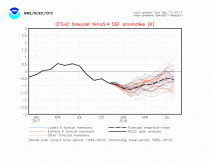
Figure 3: The model for El Nino/La Nina in the Pacific, Source: NOAA. All forecasts point to a moderately strong La Nina event until spring. A powerful La Nina such as the one observed in 2011/12 is currently not projected by the models (which incidentally did not even forecast a La Nina just a few months ago). Enlarged
The impacts on global temperatures lag behind by about 3 to 4 months, and so we should expect a La Nina dip by spring.
By Joseph D’Aleo, CCM, AMS Fellow
CLIMATE MODELS
Climate models used operationally for monthly and seasonal forecasts and for long term climate forecasts have a serious warm bias that make them not trustworthy.
MONTHLY/SEASONAL CLIMATE MODELS
These are models or model ensembles that are run monthly or in some cases even updated multiple times a day that look at upcoming months and 3-month seasons as far as 15 months into the future. Unlike the operational models used by forecasters for the daily forecasts out a week or two, these models are coupled atmospheric/oceanic models which mean they allow the ocean anomalies to change as the atmosphere does and vice versa. The operational shorter range models don’t need to do that as the ocean changes slowly on those time ranges. The new NNME model is an 8 model blend of forecasts by month and seasons.
Here are what the component models and the blend looked like for November from October.
This was a close up look at the blended forecast for November from October. For land, there is only a small speck (the size of Queens) that is below normal in east central Africa.
Here is the actual November anomalies (with two days to go). Cold covers most of South America, Africa, eastern Australia, northern India, eastern Asia, Europe and central North America.
Here is a forecast from WeatherBELL’s Pioneer statistical model with 24 inputs (solar, ENSO other oceanic and atmospheric) for November. It is not perfect but had the right idea most places.
We hear that all the climate modelers need is faster computers so they can run the models in higher resolution. I think that just will produce higher resolution garbage until they do a better job including natural factors and oscillations etc.
BTW, here is what our statistical model suggest for this winter:
Here is what the NNME blend says
--------
ULTRA LONG TERM CLIMATE MODELS
These models run out many decades into the future and have a strong input from greenhouse gases but do not properly account for solar and natural ocean cycles.
John Christy writes about these models in testimony to congress.
“When the “scientific method” is applied to the output from climate models of the IPCC AR5, specifically the bulk atmospheric temperature trends since 1979 (a key variable with a strong and obvious theoretical response to increasing GHGs in this period), it can be demonstrated that the consensus of the models fails the test to match the real-world observations by a significant margin. As such, the average of the models is considered to be untruthful in representing the recent decades of climate variation and change, and thus would be inappropriate for use in predicting future changes in the climate or for related policy decisions.
The IPCC inadvertently provided information that supports this conclusion by (a) showing that the tropical trends of climate models with extra greenhouse gases failed to match actual trends and (b) showing that climate models without extra greenhouse gases agreed with actual trends. A report of which I was a co-author demonstrates that a statistical model that uses only natural influences on the climate also explains the variations and trends since 1979 without the need of extra greenhouse gases. While such a model (or any climate model) cannot “prove” the causes of variations, the fact that its result is not rejected by the scientific method indicates it should be considered when trying to understand why the climate does what it does. Deliberate consideration of the major influences by natural variability on the climate has been conspicuously absent in the current explanations of climate change by the well-funded climate science industry.” U.S. House Committee on Science, Space & Technology 29 Mar 2017 Testimony of John R. Christy
When greenhouse climate models fail, there is no effort to rethink the theory. Instead agencies responsible for the data, search for and often find reasons to adjust the data to fit model projections.
All data today is adjusted with models with a goal of addressing data errors, changes in location or instrumentation or addressing changing distribution or to fill in for missing data or station closures. Once you start this adjustment process, it becomes increasingly possible to the find ways to mine from the data the desired results.
With the climate models there is an increasingly large divergence with balloon, satellite and surface reanalysis data sets the last 20 years. The one model that follows best the temperature is a Russian model that has roughly half the greenhouse forcing and improved ocean modeling.
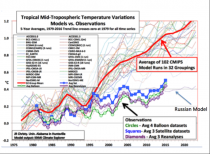
Enlarged
John Christy 2017 has shown models without extra greenhouse warming agreed perfectly with atmospheric (tropical) observations.
John Christy noted: “Incredibly, what figure 5 shows is that the bulk tropical atmospheric temperature change is modeled best when no extra GHGs are included - a direct contradiction to the IPCC conclusion that observed changes could only be modeled if extra GHGs were included.
See Tim Ball and Tom Harris’s piece on ”Would you bet your paycheck on a weather forecast?” - UN climate forecasts are consistently high… consistently wrong ... and used to drive policy




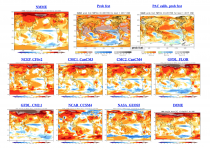
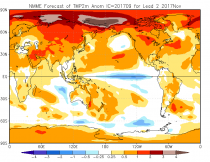
_thumb.png)

